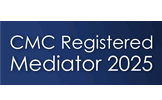
All About People
Need help to resolve your business, personal or employee conflicts & disputes?
Stay up to date with our latest news and workshops.

At All About People, we believe the key to a productive and positive workplace isn’t avoiding disagreements but addressing them early and effectively. Left unchecked, minor misunderstandings can escalate into larger issues that affect morale, productivity, and trust. Nipping disagreements in the bud is essential to maintaining a harmonious workplace and preventing unnecessary disruptions.
The workplace is full of diverse perspectives, priorities, and pressures, which naturally lead to conflicts. Some of the most common causes include:
1. Miscommunication: A lack of clarity in emails, meetings, or conversations can result in misunderstandings.
2. Differing priorities: What’s important to one team member might not be to another, leading to frustration.
3. Ambiguity in roles: When responsibilities aren’t clearly defined, confusion and overlaps can create tension.
4. Stress and deadlines: High-pressure situations often magnify minor issues, causing them to boil over.
Understanding these root causes allows us to address potential problems before they escalate into full-blown conflicts.
Over the years, I’ve developed several principles for handling workplace conflicts effectively:
1. Listen actively
When people don’t feel heard, frustrations grow. Active listening involves giving someone your full attention, asking clarifying questions, and acknowledging their perspective. Even if you don’t agree with their view, making them feel understood can de-escalate tensions.
2. Address issues early
Disagreements that are ignored rarely resolve themselves – they often grow into bigger problems. Spotting and addressing issues as soon as they arise is one of the most important things a leader or team member can do. A simple conversation at the right time can prevent misunderstandings from festering and turning into deep-seated conflicts.
3. Focus on interests, not positions
It’s easy to get stuck on ‘what’ each party wants, but exploring the ‘why’ behind their stance can open the door to creative solutions. Understanding someone’s underlying interests often uncovers opportunities for compromise that satisfy everyone involved.
4. Stay solution-focused
When emotions are high, people can get bogged down in assigning blame or rehashing past mistakes. Instead, shift the conversation towards identifying actionable solutions and moving forward as a team.
5. Model calmness and fairness
As leaders, it’s vital to set the tone for how conflicts are handled. If you respond calmly and fairly in tense situations, your team is more likely to follow your example.
Leaders play a critical role in fostering a culture where conflicts are addressed constructively. Open communication, clear expectations, and timely interventions are the hallmarks of a conflict-resilient team.
One tip I often share with managers is to create an environment where employees feel safe to raise concerns early. Encouraging open dialogue and regularly checking in with your team can help you identify brewing tensions before they turn into full-scale disputes.
Resolving workplace conflicts isn’t about assigning blame or ‘winning’ arguments; it’s about building understanding and working collaboratively to find solutions. When approached constructively, conflicts can strengthen relationships, encourage innovation, and foster a sense of shared purpose.
At All About People, we are passionate about helping organisations create workplaces where people can thrive. This blog series is part of our commitment to sharing practical strategies, expert insights, and tools to help you handle workplace conflicts effectively.
Let’s work together to create a workplace culture where issues are addressed early, openly, and positively.

Strategic Advice and Guidance for you and your organisation. Our accreditations:




Stay up to date with our latest news and workshops.